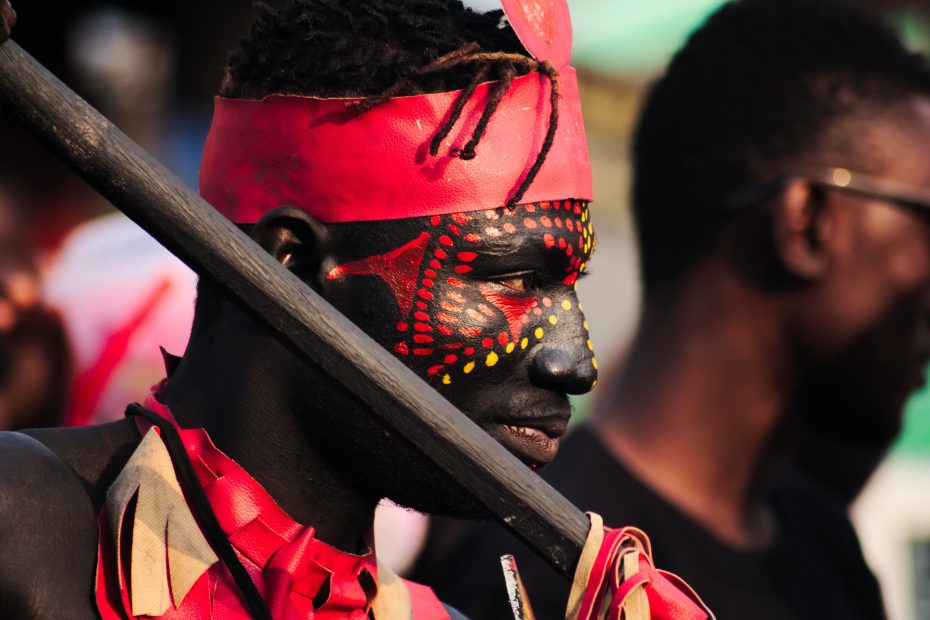Table of Contents
Introduction
Ghana is a country located in West Africa along the Gulf of Guinea and the Atlantic Ocean. Known as the first sub-Saharan African country to gain independence from colonial rule in 1957, Ghana has a population of over 30 million people from diverse ethnic and linguistic groups. This diversity is reflected in Ghana’s vibrant and colorful culture. From its pulsating music and energetic dances to its mouthwatering cuisine and beautiful handicrafts, Ghana offers visitors a rich cultural experience.
Ghana’s Music and Dance
Music is central to Ghanaian culture, with various genres that get people dancing. Highlife music combines West African rhythms and big-band horns to create an infectious, uptempo sound. Hip life fuses highlife with hip hop, while hiplife blends it with reggae. The hugely popular azonto dance music features African synths and drums mixed with hip hop beats. Ghanaians love to dance, especially to rhythmic traditional styles like kpanlogo (performed to the beat of drums), the graceful kete dance, and the energetic adowa (done to fast drumming and handclapping).
Ghanaian Cuisine
Ghanaian cuisine makes use of staple foods like millet, sorghum, plantains, cassava, yams, and beans. The most common ingredients are starchy staple foods seasoned with spices, herbs, and palm or peanut oil. Popular dishes include fufu (pounded starchy food), banku (cooked corn and cassava dough), kelewele (fried spiced plantain), and the famous jollof rice (rice cooked in a tomato broth). Other favorites are red-red (black-eyed peas stew) and waakye (rice and beans). Ghanaians love bold, intense flavors and spices like hot chilies, ginger, and nutmeg.
Ghanaian Clothing and Fashion
Ghanaian clothing utilizes colorful traditional fabrics rich in meaning. One is the famous kente cloth, hand-woven on looms and featuring brilliant geometric patterns. Kente is worn during important social and religious occasions. Other traditional fabrics include adinkra (decorated with symbolic motifs) and kabaslothes (decorated with proverbs). While traditional clothing is still prominent, modern Ghanaian fashion combines international styles with a local twist. Headwraps, African prints, and batik fabrics fashioned into dresses, pants, and tops are very popular.
Languages and Literature in Ghana
English is Ghana’s official language and used in schools, government, and business. However, Ghana has over 250 native languages and dialects. The most widely spoken are Akan, Ewe, and Ga. Ghana has a strong tradition of oral literature including tales, fables, and proverbs. Storytelling, dramas, and poetry recitals are common, often incorporating call-and-response and music. Well-known folkloric characters include Ananse the spider and warriors like Akua Sekyi and Okomfo Anokye. Modern Ghanaian literature is thriving as well, with writers like Ama Ata Aidoo, Ayi Kwei Armah, and Kojo Laing gaining acclaim.
Religions and Beliefs
Religion is integral to most Ghanaians’ daily lives. About 70% identify as Christian, 17% as Muslim, and 5% follow indigenous African faiths. Indigenous religions center on honoring ancestors, spirits, and deities and include festivals like the Homowo harvest festival and the Aboakyir Festival. Christianity and Islam have syncretized with traditional beliefs, creating uniquely Ghanaian practices. For example, some attend church on Sundays while still performing rituals to honor ancestral spirits. Most Ghanaians, regardless of religion, maintain strong spiritual beliefs and traditions.
Ghanaian Arts and Crafts
Ghanaians have perfected various distinctive art forms and crafts. The Akan of south and central Ghana are renowned for arts like intricate goldweights cast in brass and wood statuettes. The Krobos of Eastern Region create detailed, colorful coffins in the shape of animals, fish, cars, and more based on the person’s occupation or preferences. Throughout Ghana, artisans engage in crafts like pottery, beadmaking, and woodcarving. The iconic kente and adinkra cloths feature brilliant weaving and printing patterns conveying meaning.
Architecture in Ghana
Ghanaian architecture reveals the influence of Arab, European, and African styles. Along the coast are old forts and castles built by Europeans engaged in the transatlantic slave trade. In northern Ghana, round thatched-roof huts with conical roofs echo styles from other parts of Africa. Decorative features on buildings draw from Ashanti religion and express beliefs. Ghanaian palaces contain spacious open courtyards. Mosques inspired by Islamic architecture feature minarets and domed shapes. Unique building techniques use mud bricks fortified with wooden poles. Ghanaians have blended outside influences with local elements to create distinctive architectural styles.
Conclusion
From the pulsating rhythms of highlife to the flowing shapes of kente cloth, Ghana offers an exciting cultural mosaic. The warmth, community spirit, and creative expressions of its people provide visitors with an experience as vibrant as the country itself. Music, dance, food, fashion, language, and art all reveal Ghana’s diverse heritage. Ghana’s culture continues to adapt traditional roots to an increasingly modern society. By honoring its past while embracing the future, Ghana promises to retain its unique cultural richness.
FAQs
What are some traditional Ghanaian instruments?
Some common traditional Ghanaian instruments include drums like the atumpan and donno; bells like the gankogui; string instruments like the seprewa and kora; and horns like the akom and asiko flute.
What fabrics are commonly used in Ghanaian clothing?
Kente, adinkra, kabaslothe, batik, and wax print fabrics are commonly used in Ghanaian clothing. They are prized for their bright colors, symbolic patterns, and artisanal craftsmanship.
What is jollof rice and why is it important?
Jollof rice, a savory rice dish cooked in broth and spices, is a signature Ghanaian dish enjoyed across West Africa. It is a staple at celebrations and its preparation is perfected in friendly regional rivalries.
What are some common Ghanaian names for boys and girls?
Common Ghanaian names for boys include Kwame, Kwesi, Yaw, Kofi and girls include Ama, Abena, Akosua, Afua, Awo. Names often derive from the day of the week when the child was born.
What role does storytelling play in Ghanaian culture?
Storytelling is integral to Ghanaian culture for passing down traditions, morals, and history. Griots and oral storytellers maintain cultural knowledge through tales involving characters like Ananse the spider.
